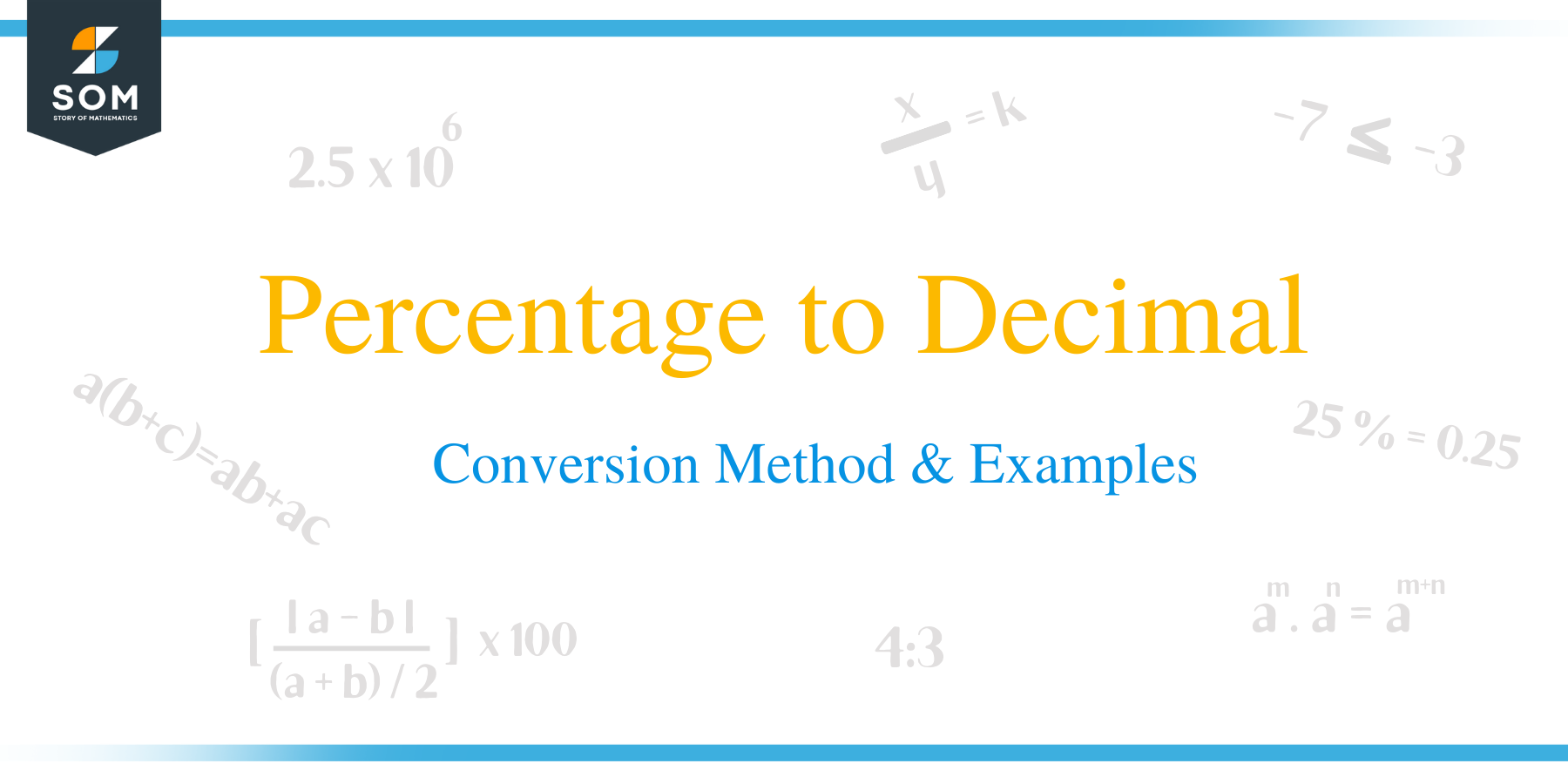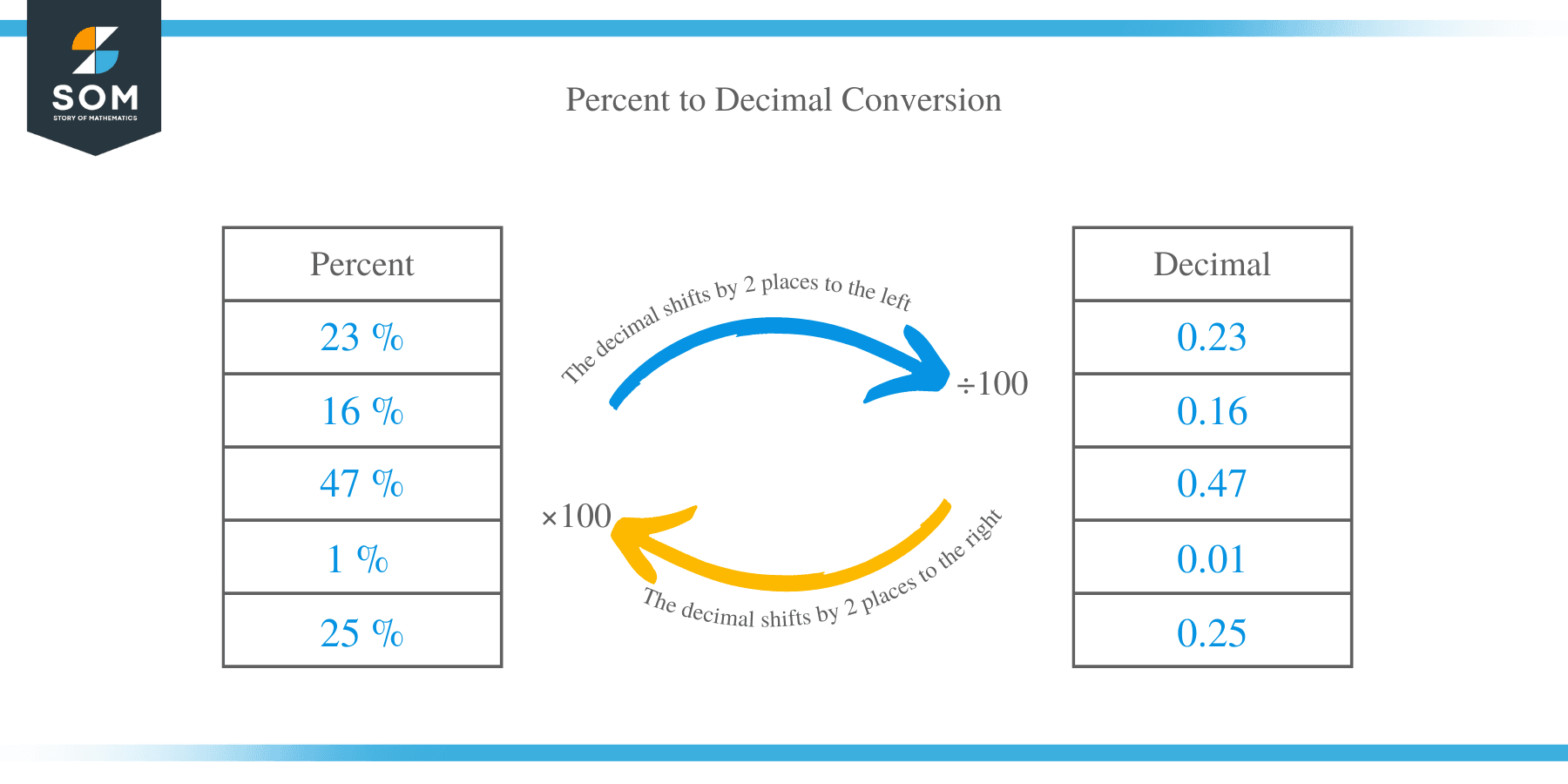- Home
- >
- Percentage to Decimal – Conversion Method & Examples
JUMP TO TOPIC
Percentage to Decimal – Conversion Method & Examples
 In mathematics, a percent is simply a number or a ratio expressed out of 100. The term originates from a Latin word –per centum which means by a hundred.
In mathematics, a percent is simply a number or a ratio expressed out of 100. The term originates from a Latin word –per centum which means by a hundred.
Percent is represented by a symbol (%) known as percentage. Some abbreviations such as “pct.” and “pc” are also used to denote percent. Percent is dimensionless, implying that it has no dimensions. For instance, 20% simply means, 20 per 100 or 20/100.
Percentages are sometimes expressed in decimal and fractional form. For example, 0.6%, 0.25%, 4/5%, 1/2% etc.
How to Convert Percent to Decimal?
Conversion of numbers from percentages to decimals is a helpful mathematics skill every individual should be comfortable with. Percentages and decimals are common in our daily life such as transactions that deal with money and also calculation scores. In academics, students’ scores are calculated in terms of percentages.
For instance, if a student scored 78% of marks in his final exam, then the percentage is calculated basing on the total marks scored by the student to the total marks.
Other applications of percent include:
- Financial institutions such as banks charge interest on loans in form of percent
- Companies describe their profit or loss in terms of percent
- Discounts on commodities are expressed as a percent
- Salesperson earn commission inform of percent.
For these reasons, it also important to learn how to convert percentages to decimals.
Below are the steps involved when converting numbers from percentages to decimals:
- Identify the percentage which is to be converted into decimal
- Remove the percentage sign (%) and divide the number by 100.
- Convert the resultant fraction into a decimal.
- Alternatively, you remove the percentage sign (%) and move the decimal two places to the left and right if the number is whole and decimal respectively. For example, to convert 250% to decimals. Move the decimal point two places to the left of the number: 250. → 25. → 2.5. And so, the answer is 2.5
How to convert percent that is a whole number to decimal?
In the case of whole number, the decimal shifts by 2 places to the left.
Example 1
- 23 % = 23/100 = 0.23
- 16 % = 16/100 = 0.16
- 47 % = 47/100 = 0.47
- 1 % = 1/100 = 0.01
- 25 % = 25/100 = 0.25
- 1% = 1 / 100 = 0.01

How to convert decimal percent to decimal?
Example 2
- 75 % = 1.75/100 = (1.75 × 100)/ (100 × 100) = 175/10000 = 0.0175
- 5 % = 7.5/100 = (7.5 × 10)/ (100 × 10) = 75/1000 = 0.075
- 5 % = 31.5/100 = (31.5 × 10)/ (100 × 10) = 315/1000 = 0.315
- 18 % = 0.18/100 = (0.18 × 100)/ (100 × 100) = 18/10000 = 0.0018
- 2 % = 231.2/100 = (231.2 × 10)/ (100 × 10) = 2312/1000 = 2.312
How to convert fractional percent to decimal?
Example 3
- 4/5 % = 0.8 % = 0.8/100 = (0.8 × 10)/ (100 × 10) = 8/1000 = 0.008
- 9/20 % = 0.45 % = 0.45/100 = (0.45 × 100)/ (100 × 100) = 45/10000 = 0.0045
- 1/80 % = 0.0125 % = 0.0125/100 = (0.0125 × 10000)/ (100 × 10000) = 125/1000000 = 0.000125
- 13/50 % = 0.26 % = 0.26/100 = (0.26 × 100)/ (100 × 100) = 26/10000 = 0.0026
- 44/5 % = 8.8 % = 8.8/100 = (8.8 × 10)/ (100 × 10) = 88/1000 = 0.088

